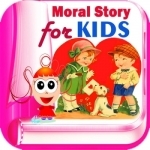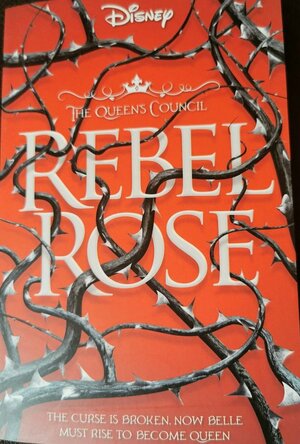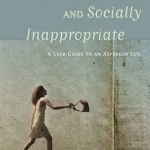Lottie disney bookworm (1056 KP) rated Rebel Rose (The Queen's Council #1) in Books
Dec 29, 2020
Controversially, Emma Theriault baits the hardcore Disney fans straight out of the gates by naming her Prince Lio (Lio, Lion, beast, gettit?) rather than Adam. In the grand scheme of things this can easily be forgiven but it still seems a strange choice. Maybe Adam was too English for a French Prince?
However, the use of first person perspective ensures that our protagonist remains firmly in Belle. Belle has refused the title of Princess upon marriage in order to stay true to her roots but is constantly hiding her true self: even referring to a trip around Europe as “one last adventure before the walls of the castle close around her”. When Belle witnesses the revolutionary sparks within the city this divides her further: how can she be part of the nobility these people rally against and an avid “commoner” at the same time?
In truth, Belle as a character divided me as well. Belle has always been my favourite Disney Princess (possibly to do with that massive library) and, in the most part, I feel Theriault wrote her well and stayed true to the character. However, in the early pages Belle felt very spoilt and selfish to me: preferring to disguise herself and explore Paris rather than support Lio in explaining his decade-long disappearing act to King Louis.
I was intrigued to know what my fellow reviewers thought and was unsurprised to see a LOT of criticism of our heroine, her shunning of the title of Princess and her lack of enthusiasm to be a leader. However, I almost felt that this made the story more realistic. Just because she broke a curse and married a Prince doesn’t mean she can automatically feel ready and comfortable leading a kingdom! Maybe she just has a fondness for hairy men?
Belle’s reluctance and tentativeness to lead also fed very nicely into her passion to improve the lives of the residents of the kingdom of Aveyon. This is common sense to her and therefore doesn’t feel like ruling. Indeed, it is not seen by any of the main characters as ruling but in the end it saves them all from a revolution of their own.
I would have liked Lio to be a little bit more developed than he was. The fact that he harboured an element of PTSD from the curse was really interesting but not explored any further than his nightmares and aversion towards roses. There was undoubtedly chemistry between him and Belle but it was just a bit lacklustre in my opinion. This may be due to his absence for a lot of the book but I felt the reader could have loved him a lot more than we did.
Lio’s cousin Bastien is the slimy villain of the tale and I would have liked a bit more mystery and suspense within his character. I appreciated that Belle didn’t like him initially as he was a powdered, wig wearing noble who was close to King Louis, basically as far away from Belle as possible. Bastien is also quite snobby towards Belle in his earliest chapters so you can’t blame her for disliking him.
However, by using language to plainly show that Belle distrusts her husband’s cousin, Theriault instantly creates a flashing neon “villain” sign above his head. This would have been fine in a middle-grade book but within YA I think the reader could have been afforded to be misled a couple of times before uncovering Bastien’s real intentions.
**This section contains spoilers**
I also believe that Bastien’s eventual story arc was a tad unbelievable. At first I thought his revolutionary sympathies and further plots with various goons was a ruse in order to gain the throne for himself, particularly once he had established himself firmly with the advisory. Emma Theriault’s decision to keep Bastien true to the revolution seemed rushed, and a bit odd to be honest. This is a noble who lives in the lap of luxury and attends to King Louis himself but who then turns on his own kind after basically forcing the kingdom of Aveyon to break away from France? It didn’t seem plausible to me.
Rebel Rose is an easy to read continuation of one of our favourite Disney tales. It reintroduces us to old favourites such as Mrs Potts and Lumiere as well as introducing new characters such as Marguerite and Bastien. Belle’s journey to staying true to herself and following her gut is one anyone can empathise with and her discovery that she does not have to appease to outsider’s expectations will never cease to be important.
The magic contained within this novel is a perfect springboard for the rest of the novels within the Queen’s Council series: the next one is based on Mulan and will be written by Livia Blackburne before Jasmine’s story by Alexandra Monir follows in 2022. The majority of the action within this novel does take place towards the end so it can be a little slow paced and politics focused but I enjoyed seeing Belle and Lio break free of their fairytale life and become a little more real.
Although this isn’t my favourite Disney novel, I do appreciate the break away from the retelling genre and the move towards bringing these well-known characters into the real world. For a debut novel I think Emma Theriault should be immensely proud: the research for the historical context alone must have been a mission!
One of the things I noticed most was she details social rules in ways I never would have thought to do - she has a list of seven very specific rules for eye contact, for example. As an allistic person, most of those rules are things I do instinctively, without even really knowing the reason for them. Like, in conversation, looking up or to the side means you're thinking, looking down means you're done talking. I read that to my husband and he jumped in, surprised, with "so THAT'S why I get interrupted so much!" I never would have thought to codify that into words, but it's something I naturally do.
She talks about meltdowns vs shutdowns, which are things we've already learned the difference between with my husband, but we're both eager for strategies to avoid, mitigate, and recover from them. She gave some strategies as places to start, but that's hard to give general advice on as every autistic is so very different in that regard.
The chapter on alexithymia was really interesting. Alexithymia being an impairment in identifying and describing emotions. It leads to a lot of "Hey, are you okay?" "I don't know." "Well, how do you feel?" "I DON'T KNOW!" We'd already been introduced to this concept through her blog, but she expands on it in the book.
Another interesting (and applicable!) chapter was the one on executive dysfunction. (We joke that I am my husband's personal assistant - I keep his calendar and remind him of important dates/events/homework due dates, and sometimes nudge him to do things if it seems he's having trouble getting started.)
Kim uses the term Asperger's in her writing (as well as autism), but Asperger's has been rolled into the greater Autism Spectrum Disorder since 2013. Very recently there's been some debate about the Asperger name, as it's been revealed that Hans Asperger at least cooperated with the Nazis, and possibly was one himself. It's still used commonly, though, and there is a large community built around being Aspies. Personally, I think using the Asperger term is a little too divisive - it's basically the same as "high-functioning." But. I'm allistic and my opinion on the matter isn't the important one, so. We use autistic for my husband. (His choice, and when I asked his thoughts, he also thinks the Asperger term is divisive and not useful.) There's a number of Twitter threads and articles on the subject of using or not using the Asperger term, and what it means to the community.
Overall, this was a really great book for learning about how autism affects day-to-day life, and gave us lots of talking points and words for things we didn't have the vocabulary for. I'm looking forward to tackling the rest of my Autism Reading List.
You can find all my reviews at http://goddessinthestacks.wordpress.com
Kristy H (1252 KP) rated The Most Dangerous Place on Earth in Books
Feb 13, 2018
I'd heard a lot of advance praise for this novel, and had put it on hold at my local library ages ago. I was excited to finally get a chance to read it, but upon finishing it, was left feeling conflicted. This is going to be yet another one of those lauded novels that everyone loves where I feel a bit "eh." Don't get me wrong: this is a well-written book--even a beautiful one at times--and it often tells a compelling and sometimes frightening story of kids growing up in suburbia. The novel starts with the gang in eighth grade and goes through their senior year. It's told in snippets from various students, as well as Miss Nicoll.
The problem, for me, is that it read more like a series of interconnected short stories than a novel. We get brief insights into a variety of students, but no real depth or insight into anyone. You're able to infer a lot about each and how their home life and past has affected them, but every student's piece leaves you wanting more, feeling unfinished. Even Miss Nicoll's role sort of trails off. It's a shame, because most of the teens are so clearly written that you can visualize them so well - they each stand out on the page, and each one could have commanded the book on their own. Instead, they come and go, and at times, the plot veers off into strange side stories that seem unnecessary or unbelievable.
This is one of those novels that terrifies me to have my children grow up, because it presents high school as one never-ending saga of bullying and partying. The rich, disaffected teens are abandoned by their similarly rich and disaffected parents and no one really seems to care about anything. Still, you find yourself getting into one kids' story, only to have the point of view turn and you're thrust into another student's life instead. By the end, I found myself frustrated, wanting to know more, and wishing for more finality to, well, everything. 3.5 stars
<center><a href="http://justacatandabookatherside.blogspot.com/">Blog</a>; ~ <a href="https://twitter.com/mwcmoto">Twitter</a>; ~ <a href="https://www.facebook.com/justacatandabook/">Facebook</a>; ~ <a href="https://plus.google.com/u/0/+KristyHamiltonbooks">Google+</a></center>;
Natari (73 KP) rated Christmas At The Palace in Books
Jul 19, 2019
But what makes this a great book is the sheer genuine interactions. It makes it pleasant, because you can believe the story. The couple are a little older, they aren't the rush of youth stumbling into a relationship, but wizened 30 year olds who are looking for more meaning in each other. It is very fast paced, and definitely a whirlwind romance spanning major milestones in the novel. However, the plot backs up the reasoning for this. You don't feel rushed. It's like a Sunday afternoon drive in bumper cars. Thrilling but relaxing.
The book is very obviously, and at times heavily, inspired by the Duke and Duchess of Sussex, Prince Harry and Meghan, with telling traits of other family members and situations. But it isn't a fictionalised version of their story. It is definitely Kumari's story, it is just set in our modern world.
Characters are well rounded and deep. I like the Goofball prince. He isn't your typical prince charming, he's quite blokey but loveable. Kumari is fantastic. I love her character and her rebellious resolve. She's mature and can be quite reserved, which helps her cope better with the extreme situation the book demands. I liked how her cultural attributes were used in the book. Not in the sense of the "scandal" that that led the plot, but in the natural fit of words like amma and thatha (Sri Lankan words for mother and father). Never explained, just in use. These things are so easily taken for granted in 'white person' literature. As the white girl dating a British guy whose parents migrated from abroad, I'm fortunate to understand the story from Prince Ben's point of view. Or rather, unfortunate, as the toxicity of Brexit campaigns are polluting the UK right now and we have to watch our loved ones bear the force of idiots. I hope more books with British heros of non-white backgrounds litter our library shelves and top reads at supermarkets more quickly. I very much want people to understand that people are people. And Christmas at the Palace makes this point so beautifully. It isn't being preached, it's just telling it like it is, for better or for worse.
My favourite character is Ophelia, whose story has been set up for a sequel. She's loud but polite and acts as if she is brash, but is terrifyingly calculating. She's wonderful.
All in all, the book was an easy, enjoyable read. Normally I read non-stop but life and work happened and I had to take frequent breaks. It was easy to do with Christmas at the Palace because there are sections that separate the major points of the story. If you don't always have a lot of time to read, this is a good recommendation as you can pick it up and continue and not be missing out or having to re-read passages.

The Christmas List
Shopping and Productivity
App
The #1 Shopping App in the US – The Christmas List is an easy-to-use app to help you organize...

Best Moral Story Books for Kids
Book and Education
App
This Application Helps Kids to learn some good lessons about good habits to follow in life. You can...

Ovia Baby Development Tracker
Medical and Health & Fitness
App
***The must-have app for first-time moms and parents everywhere*** Ovia Parenting is a completely...

RH Medical Labs - Normal labs, now with Pediatric and Pregnancy labs in your pocket!
Medical and Health & Fitness
App
• RH Medical Labs is the best rated app, featured in the top stores in 67 countries! • We...
Lee (2222 KP) rated Scary Stories to Tell in the Dark (2019) in Movies
Aug 21, 2019
That movie version comes from Troll Hunter director André Øvredal and producer/co-writer Guillermo del Toro and attempts a Goosebumps style movie, taking some of the better known stories from the 80+ contained within the books and weaving them into a larger narrative, set in Mill Valley Pennsylvania during the fall of 1968.
It's Halloween and a group of teens are preparing to go out for an evening of trick or treating - applying makeup, getting into their costumes, fishing in the toilet for turds in preparation for a Halloween trick. They head out on their bikes but it's not long before they run into some idiot jocks from their local school, and that turd trick suddenly comes in handy! We've already been introduced to the jocks earlier in the movie, out in a cornfield where they were hitting a creepy looking scarecrow about the head with a baseball bat. Yep, they're certainly going to regret that a little bit later on!
The teens manage to escape the jocks, working their way into a drive through movie that's showing "Night of the Living Dead" and into the car of another teen called Ramón. The group strike up a bond with Ramón after he helps them out and they all decide to go and break into an abandoned local house which is reportedly haunted. They find their way into the basement where legend has it that Sarah Bellows, the daughter of a prominent local family, was locked away in the late 1800s. Horror nerd Stella comes across a book containing short scary stories that were written in blood by Sarah, and she decides to take it with them. As Stella opens the book’s pages, she sees that Sarah’s stories are literally beginning to write themselves - stories that put her friends in some pretty unpleasant situations, stories which immediately become reality the moment they're written. As Stella later puts it, "You don't read the book, the book reads you".
The setup and the scenarios within each story are enjoyable enough and are certainly creepy, however the execution doesn't always work so well and the payoffs aren't quite as scary as I would have liked. The movie also suffers from some slightly dodgy CGI at times too, which doesn't help. That said, I thoroughly enjoyed the final story, and the return to the house in order to try and stop Sarah Bellows worked really well for me. It all ends with a definite opportunity for a sequel and with plenty more scary stories to choose from within the source material, I'm sure we'll be seeing another one soon. Scary Stories to Tell in the Dark taps nicely into the "It" and "Stranger Thing" vibe, with it's group of teens rising up together against evil, and despite it's faults I did have a lot of fun with it. I'm definitely interested in seeing more.





